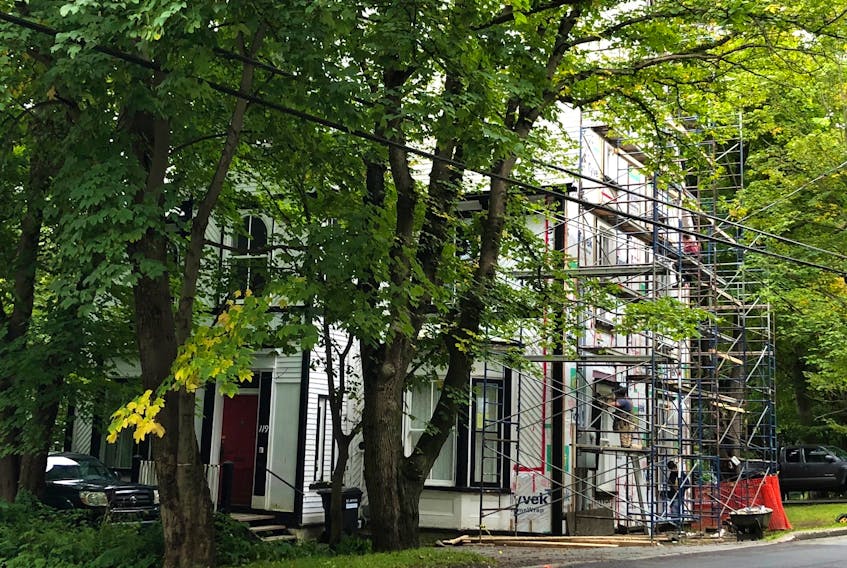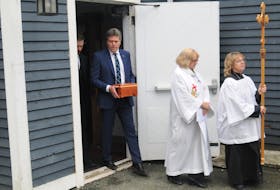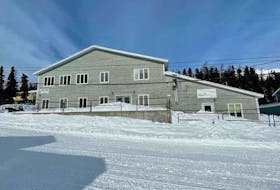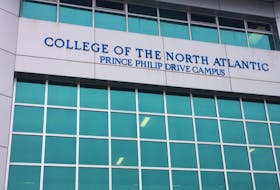ST. JOHN'S, N.L. — St. John’s has a new designated heritage building.
It’s the roughly 130-year-old home at 119 Waterford Bridge Rd., known as Summerlea. While the structure itself is impressive, even more interesting are the people who have lived there.
An obituary in the Harbour Grace Standard for Robert Alexander Syme says the boy died at Summerlea on August 21, 1880 at age four years and five months. He was the fourth son of John Syme, a Scottish immigrant who moved to Newfoundland in 1863 and who owned the Summerlea property.
According to a St. John’s city council decision note at a recent council meeting where heritage designation was granted, there is evidence that Syme lived in Harbour Grace in the early 1870s and moved to St. John’s shortly thereafter.
Syme had a connection to St. John’s city council in the years between 1894 and 1909, when the McAlpine’s Newfoundland Directory listed him as a general accountant for council, and later as a commission agent, broker and chartered accountant. His business was located at 1 Water St. West.
He was also appointed to a position with the Legislative Council of Government in Newfoundland during the mid to late 1880s, and volunteered on the St. John’s Curling Club Executive and the Regatta Committee.
The house at Summerlea burned down on June 13, 1886, according to an article in the Evening Telegram. The article indicates Syme intended to build a large cottage in its place. That’s the house that still stands today.
It’s one of the few homes original to the area on the south side of Waterford Bridge Road.
It’s built in the Carpenter Gothic style with a steep pitched gable roof, decorative bargeboard, a pinnacle, rounded arch windows and gable windows.
It has stained glass windows and four-pane windows throughout. It still has the original plaster mouldings and medallions on the ceiling, and wooden floors and trims.
Current owner Ian Fong, a 47-year-old pressure equipment inspector in the oil and gas industry, bought the property last year.
“It’s been fun learning about the history of the house, and the families that have lived there,” he said, adding the MUN Digital Archive has been an excellent resource.
He said the person they bought the house from last year only lived there for about a year, and prior to that it was occupied by the Snellen family since the 1970s.
Dr. Jan Snellen was a professor and physiologist.
He was born in 1925 in Tokyo, Japan, and after working in Holland and South Africa, he joined Memorial University’s Medical School in 1970.
Dr. Snellen was a world-recognized authority in human thermodynamics. He supervised the construction and operation of one of the few specialized total body calorimeters in the world.

Fong said he didn’t know the history of the home before he and his wife purchased it, but he drove by it many times over the years and it always stood out. When they saw it listed while searching for a new home, they decided to take a look.
He said the house had “good bones” but needed some work, which he said has been “a fun adventure”.
So far, they’ve replaced all the old 60-amp knob and tube wiring, an early kind of electrical wiring used in buildings up to about the 1940s. Fong said it would have been a renovation for the home to have that electricity installed in the first place.
They also restored all of the original wooden windows, and are currently replacing the siding with new clapboard that will replicate the existing.
Fong said he’s happy to be able to preserve the “distinct old house”.
“There’s other properties that have been on Waterford Bridge Road that were torn down to put new stuff up, and I know we can’t preserve everything all the time, but I think it’s a nice example to try to preserve it, and keep it going.”
He said many area residents have expressed “a lot of joy” that the house is being preserved. He’s even heard from one of Dr. Snellen’s children who was happy with the work Fong is doing to maintain the property.
"I know we can’t preserve everything all the time, but I think it’s a nice example to try to preserve it, and keep it going.” — Ian Fong
Fong said he decided to seek heritage designation for the property because they were interested in upkeeping it, and with designation they are able to apply for funding grants which can help alleviate some of the exterior maintenance costs.
He said Michael Philpott, a heritage officer with Heritage Newfoundland and Labrador, was a great resource when they were considering designation.
Philpott told The Telegram it’s “wonderful” to see people get really invested in their historic houses.
He said there are many reasons why he believes heritage designation is important.
“It’s partly about recognizing histories of these buildings, and there’s quite a diverse bit of history represented by our designations. So, some are merchants’ houses, but many more belonged to fishermen and tell the stories of different themes – industries, movements, that type of thing, so it’s educational.
“It recognizes the work that building owners have done restoring their buildings, and keeping them up over time, and being stewards of those buildings.
“And it contributes to a more interesting streetscape and community, and that’s of course part of our tourism product as well.”
Twitter: @juanitamercer_









